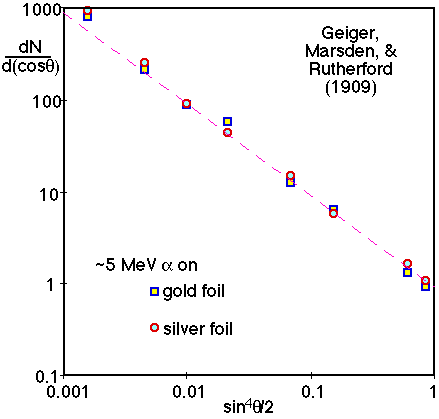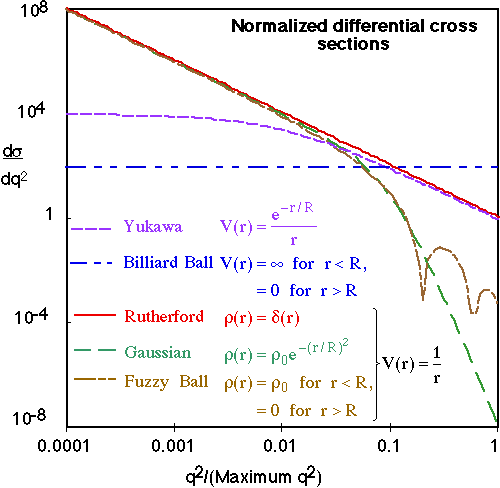 V(r) eiq·r
d3r
V(r) eiq·r
d3rQuantum Scattering
Born approximation: incident particle is a plane wave and scattered amplitude is a spherical wave.
In general, the differential cross-section can be written as
where f(q) is essentially the Fourier transform of the scattering potential
 V(r) eiq·r
d3r
V(r) eiq·r
d3rIf the scattering is spherically symmetric
 V(r) r sin(qr) dr
V(r) r sin(qr) drIf V(r)~1/r, then simple dimensional counting requires f(q2)~1/q2.
Rutherford scattering can be analysed either classically or quantum mechanically.
In general, if there is no range or size scale in a scattering problem, then dimensional analysis requires
Which is very different from the the differential cross section expected from billiard ball scattering (ds/dW µ constant).

For electromagnetic scattering of incident point particles, we can consider scattering from an extended target as point-point scattering integrated over the charge distribution of the target:
The Form Factor is the Fourier transform of the target's charge distribution:
 r(r)
eiq·r d3r
r(r)
eiq·r d3rand (ds/dW)R is the reference cross section for poin-point scattering (e.g. For electron scattering this is usually Mott scattering, but Rutherford scattering can be used in the low energy limit.)
Comparison of differential cross sections for scattering
a spinless point particle from either a Rutherford point particle
or particles with a size R=10/qmax.

Electron-proton scattering
F&H Figure 6.13: the proton is not a point electric charge, but has a size ~1fm.
F&H Figure 6.5: atomic nuclei have a size and a reasonable well defined edge.
F&H Figure 6.19:
protons do not have a well defined edge, but inside the proton
there seem to be point charge constituents.